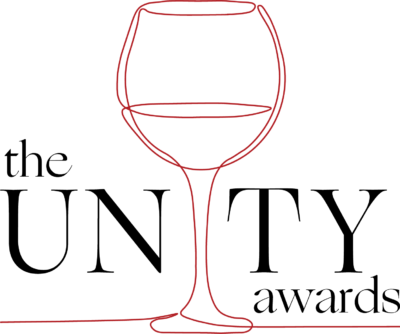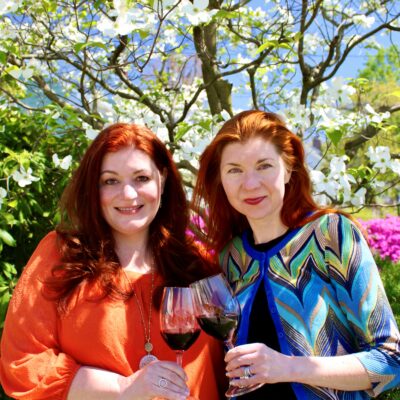The story of wine grape-growing in New York is one of trial and error. When colonists attempted to plant the Vinifera vines they brought from Europe, the vines failed to thrive in the different climate and soils. Early New York settlers had no choice but to make wine from native grapes. It wasn’t until the mid-1800s that researchers discovered that grafting Vinifera vines onto native American grape rootstocks made it possible to successfully grow Vinifera.

The wine industry is indebted to those early agricultural researchers who advanced wine grape growing in the U.S. and also to today’s researchers who build on those early discoveries made through audacious experiments. One of those researchers is Jennifer Phillips Russo, the Cornell Viticulture Extension Specialist for the Lake Erie Regional Grape Program.
Much of Jennifer’s work is with vines themselves, primarily making sure they are healthy and balanced so that they can be productive. For her important work, the New York Wine & Grape Foundation awarded Jennifer with the 2022 Unity Awards Research Award for major contributions in the area of grape growing, processing and wine research.
Productive vines aren’t necessarily ones that yield the most grapes, however, and the researcher’s goal is to find that productive sweet spot. As with most things in life, that sweet spot is achieved with balance.
“If you really push your vines then it’s going to deplete some of the necessary carbohydrates and reserves that they need to support a crop the following year,” she says. “In the past, it has been a high crop, low crop, high crop, low crop cycle in this industry. We’re trying to educate on how to do vine balance so that you can get the amount of fruit and quality standards that you need in order to keep growing your vines so they can produce more crop than if they were stressed with a higher crop and then the next year you get a lower crop.”
Jennifer’s background is in biology and environmental science. Her graduate work was in water quality and harmful algal blooms and nutrients that drove those harmful blooms. Because of the research she was doing in that area, Dr. Terry Bates of Cornell asked her to join in on the SCRI Efficient Vineyard Project. Her primary role was in developing and testing new precision viticulture technologies and protocol for regional yield prediction of Concord grapes in the Lake Erie Grape Region with the goal of reducing error from 15 to 20 percent to below 10 percent.
More accurate yield prediction has benefits for both producers and processors. For the producers, it’s pertinent to vine balance.
“A lot of people eyeball their vines,” Jennifer says, but eyeballing doesn’t always get them to their goals. “Some producers are growing for quantity; some people are growing for quality. Some have their vines attached to their wineries so there are certain levels that they’re looking to do. You need to know that your vine can handle what you’re asking it to do.”
Crop estimation, done 30 days post-bloom, allows producers to see where they’re standing at with yield so they can make adjustments if they need to.
“It’s also important for the processors—the people who are going to take the grapes in the end—to know how much they’re getting [to plan for] tank space and labor,” she says.
In collaboration with Coleman Technologies Inc, Jennifer developed the Cornell Grape Counting (CGC) machine within the first three months of her research appointment. The precision viticultural tool utilizes computer vision, image-processing algorithms, and custom software that can count 3,000-5,000 berry samples with >99.5% accuracy with digital weights in under two minutes with manual assist. Often, the most practical way to decrease the margin of error is to increase the sample size. The time savings that the CGC allows are allocated to the collection of more samples to obtain a more precise crop estimation.
The machine is doing its job. One processor with approximately 18,500 acres of Concord grapes contracted the CGC machine for their regional crop estimation, which improved from 15-20% variability to under 7% the first season the machine was used. The processor has contracted every subsequent season since 2018.
Jennifer fully understands that her work is possible because of the research others have done before her.
“I like to use the quote ‘standing on the shoulder of giants,’” she says. “That’s what I think about extension and that’s what I think about research. It’s why I get so passionate about it. Other people have already tried to solve these problems and have been very successful. Now, let’s just make that work for operations on a farm applied research scale.”
Jennifer says she is honored that a colleague nominated her for the Unity Award.
“I can’t comprehend the fact that I won this award, and I’m with the other honorees who have received it,” she explains “I am just nose to the grindstone, doing my work, trying to help my industry the best that I can, and it really was heartfelt to know that a colleague of mine said ‘you’re doing great work.’”
What’s next? Another recently funded, major research project Jennifer is working on is a floor management study for non-irrigated juice grapes for water and nutrient conservation.
Recognizing that the 32,000 acres of juice grapes on the 582 farms in the Lake Erie AVA need new integrated weed management strategies, the project’s goal is to identify and apply new floor management strategies that are needed to balance soil health, vine capacity and economic sustainability by maximizing soil cover and vegetative growth during periods of adequate soil moisture and minimizing vine competition during the dry summer months for juice grape production.
Through her research, Jennifer will continue to give more New York farmers tools to contend with an ever-changing climate.

About the Unity Awards
The Unity Awards were created in 1990 as a way to recognize, encourage, and celebrate cooperation among grape growers, wineries (and their staff), researchers, retailers and others to advance the entire industry. The winery and grower community in New York state has a rich history of working and succeeding together despite facing a variety of challenges through the years. Recognizing the longstanding and bold spirit of our community members and their numerous achievements, the New York Wine & Grape Foundation is proud to continue honoring industry leaders & champions of New York wine for more than 30 years.

